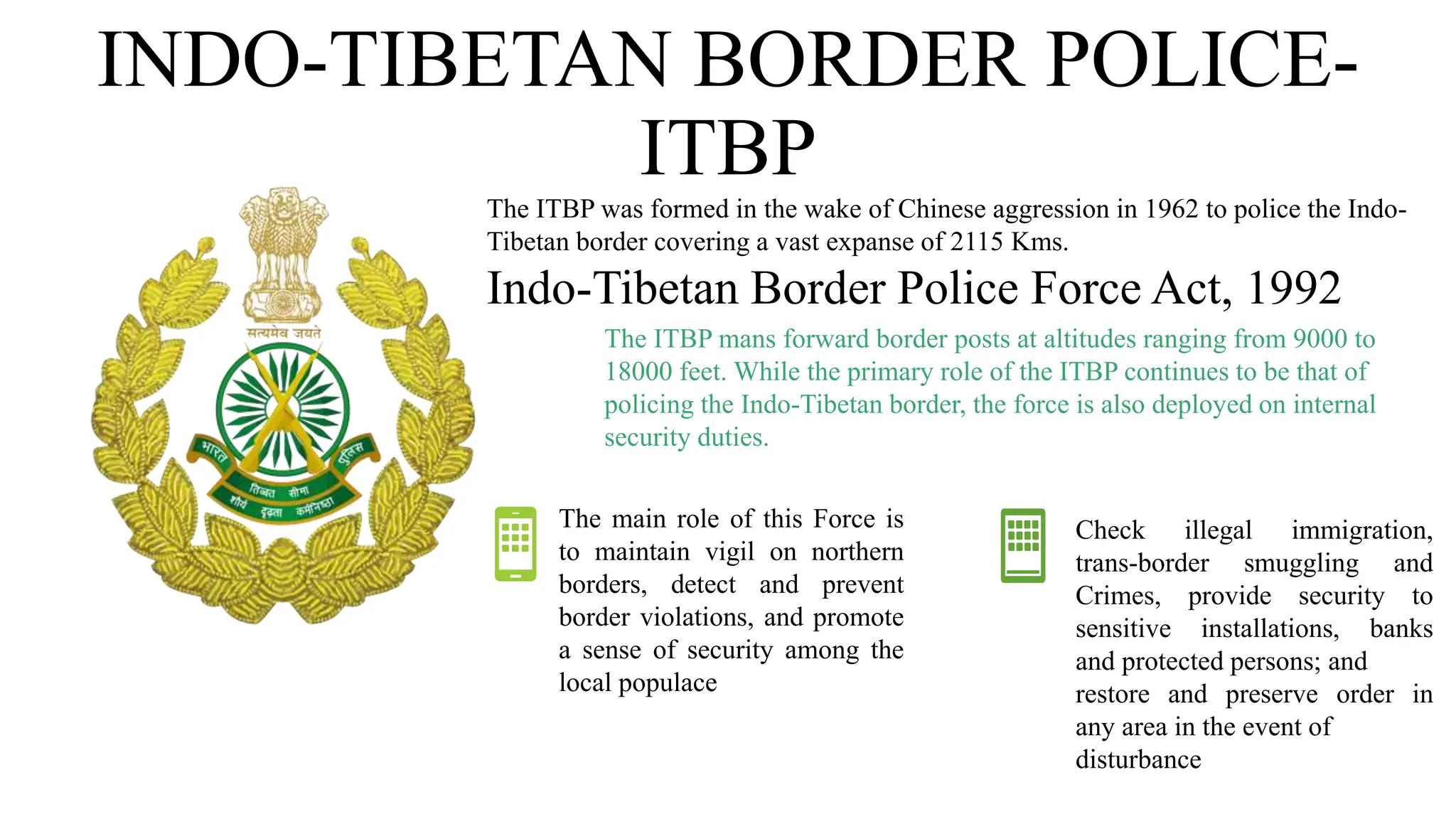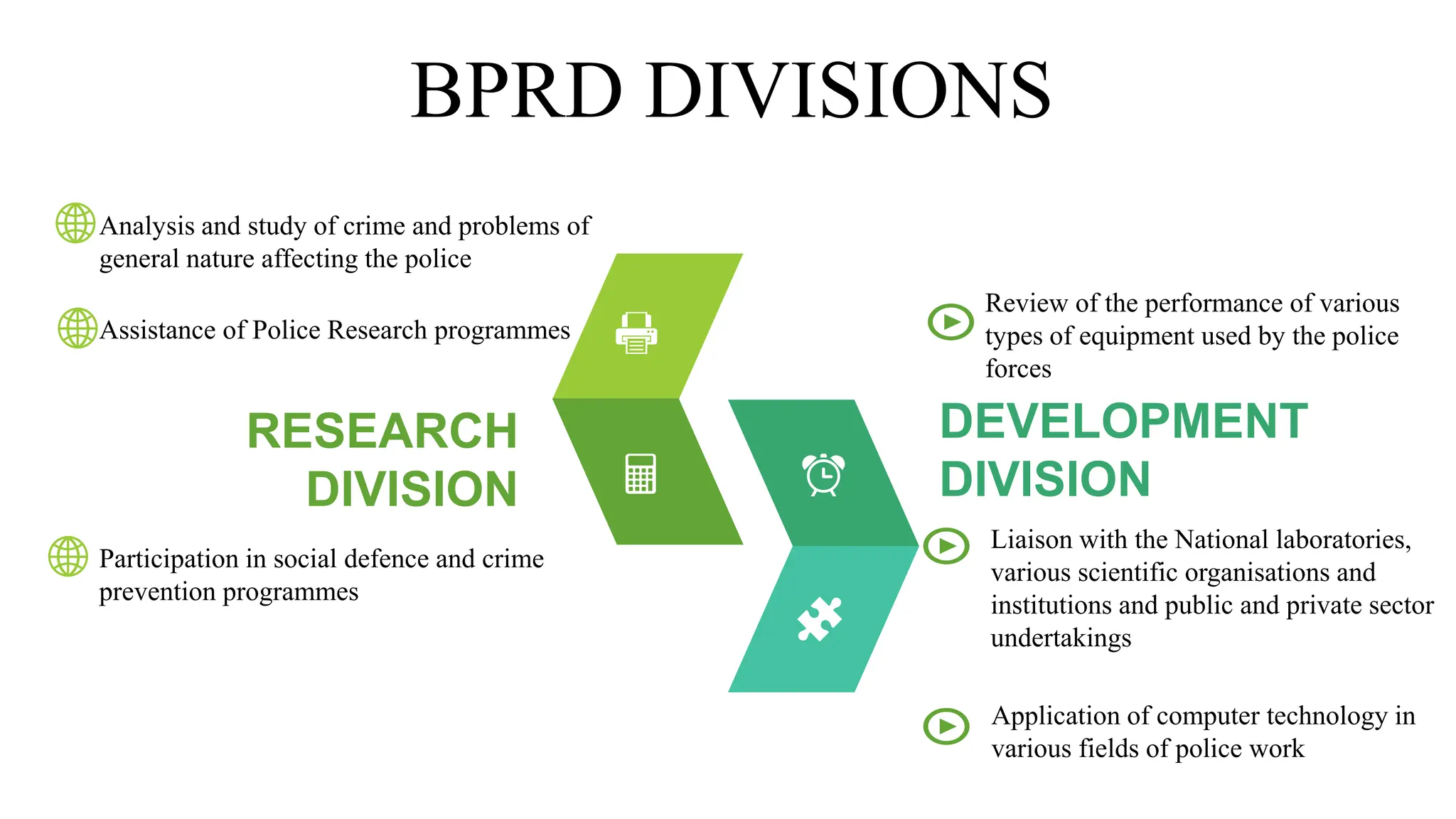1. The document discusses the organization of police in India at central and state levels. It outlines that police is a state subject governed by state rules and regulations.
2. The key aspects of police organization covered include roles of central and state governments, ranks and structures of police forces from national to local levels, and specialized branches like armed police, criminal investigation departments, railway police, and central police organizations.
3. Police forces aim to prevent and detect crime, maintain law and order, and promote security through hierarchical command structures, specialized units, and defined roles from constables to directors general of police.















































